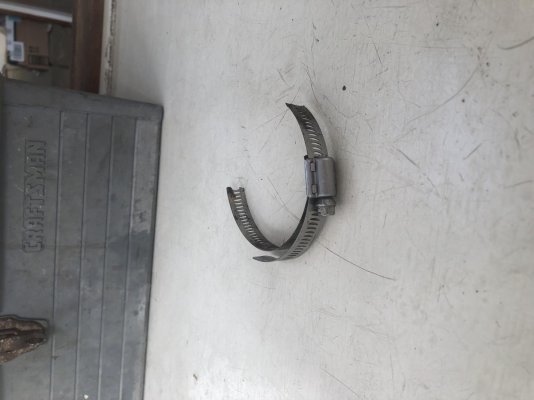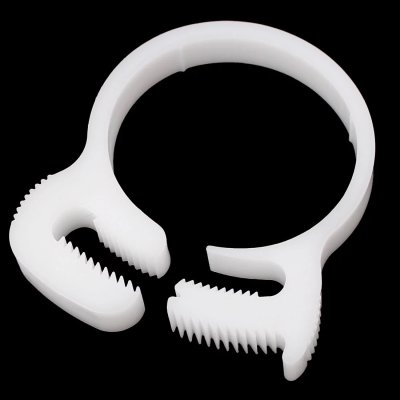High Wire
Guru
We were heading offshore for a fishing trip on a friend’s boat yesterday. After over an hour running one of the guys says “Hey where’s that water coming from?” There was a foot square wet spot on the carpet between the engine boxes where our lunch coolers sit. Our mechanic friend stuck his finger in and tasted it “That’s salt!” All stop. We pulled up the hatch between the engine boxes and found six inches of water on the false floor between the engines. Auto bilge pump not running. For some reason the water wasn’t making it down to the bilge pumps. We pulled up the hatch in the false floor and all of the water poured down to the pumps.
What we found was the single hose clamp at the inlet to the heat exchanger broke and the hose came half way off the 1 1/2” hx inlet barb. The clamp broke on the exact bottom of the clamp diameter. Good thing we weren’t all sleeping. The drain hole to the pumps is only 3/8”. Way too small to handle a seawater line leak or to fill the area around the float switch before water filled up around it.
Check and/or replace those seawater hose clamps.
What we found was the single hose clamp at the inlet to the heat exchanger broke and the hose came half way off the 1 1/2” hx inlet barb. The clamp broke on the exact bottom of the clamp diameter. Good thing we weren’t all sleeping. The drain hole to the pumps is only 3/8”. Way too small to handle a seawater line leak or to fill the area around the float switch before water filled up around it.
Check and/or replace those seawater hose clamps.
Attachments
Last edited:


 Too soft on friends I guess....
Too soft on friends I guess.... 